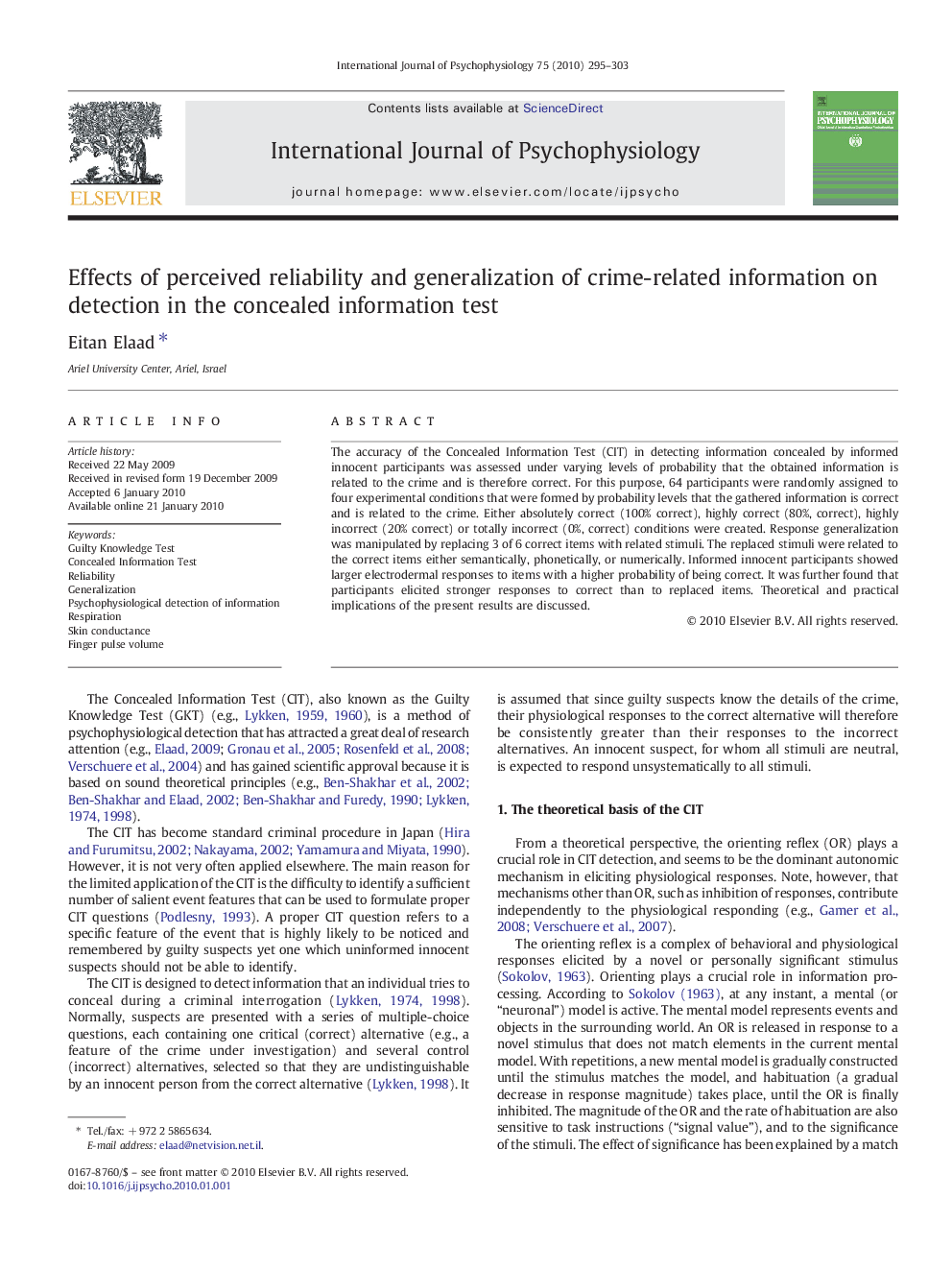| Article ID | Journal | Published Year | Pages | File Type |
|---|---|---|---|---|
| 7296279 | International Journal of Psychophysiology | 2010 | 9 Pages |
Abstract
The accuracy of the Concealed Information Test (CIT) in detecting information concealed by informed innocent participants was assessed under varying levels of probability that the obtained information is related to the crime and is therefore correct. For this purpose, 64 participants were randomly assigned to four experimental conditions that were formed by probability levels that the gathered information is correct and is related to the crime. Either absolutely correct (100% correct), highly correct (80%, correct), highly incorrect (20% correct) or totally incorrect (0%, correct) conditions were created. Response generalization was manipulated by replacing 3 of 6 correct items with related stimuli. The replaced stimuli were related to the correct items either semantically, phonetically, or numerically. Informed innocent participants showed larger electrodermal responses to items with a higher probability of being correct. It was further found that participants elicited stronger responses to correct than to replaced items. Theoretical and practical implications of the present results are discussed.
Keywords
Related Topics
Life Sciences
Neuroscience
Behavioral Neuroscience
Authors
Eitan Elaad,
